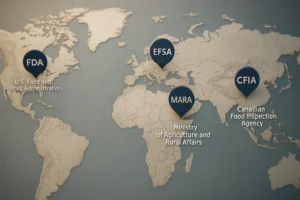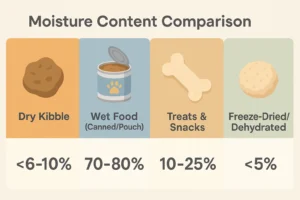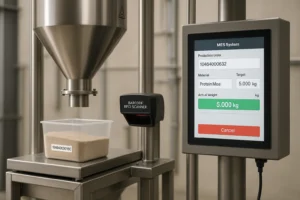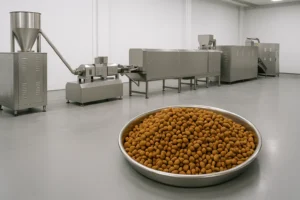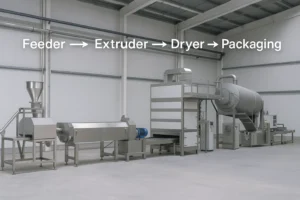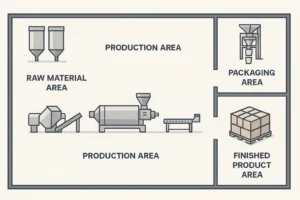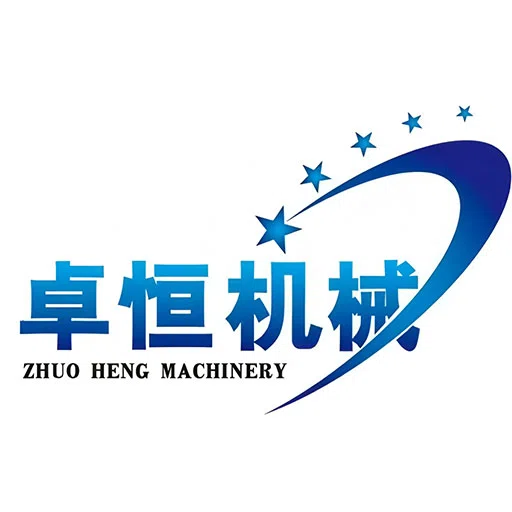Opening a small pet food factory requires a careful balance between ambition and realism. Budgets can range from lean entry models to fully automated lines, depending on production capacity, recipe design, compliance requirements, and location costs.
Short Answer: From $12,000 for outsourced models to $600,000 for a fully functional small factory. Key drivers include facility renovation, extrusion/drying equipment, compliance, and raw material strategy.
Overview
Lean Entry (Outsourcing + Semi-Processing): $20,000–$50,000
Micro Dry Kibble Line (80–200 kg/h): $50,000–$220,000
Small Factory (300–1000 kg/h): $200,000–$600,000
Major Variables: facility, extrusion equipment, compliance, raw materials
CapEx vs OpEx: Understanding Your Financial Structure
CapEx (One-Time Investment)
Major upfront costs include:
Facility lease, renovation, flooring, drainage, ventilation
Equipment: mixers → grinding → Pet Food Extruder → drying → coating → cooling → sieving → packaging
Utilities: electricity, steam, compressed air, water
QA/QC setup: lab testing kits, storage rooms, safety equipment
Initial raw materials & packaging
Registration, certification, insurance
Branding and launch materials
OpEx (Monthly Costs)
Ongoing operational costs include:
Labor and payroll
Energy, water, and utility bills
Rolling purchase of ingredients and packaging
Maintenance and spare parts
Testing, audits, and compliance checks
Marketing and distribution expenses
Depreciation and financing

Budget Scenarios & Typical Configurations
Scenario A: Lean Entry ($30k–$60k)
Focus on pre-mixing, outsourcing sterilization/packaging, renting or buying second-hand machines. Best for market validation and early DTC e-commerce.
Scenario B: Micro Dry Line ($80k–$250k)
80–200 kg/h capacity. Single-screw extrusion, belt dryer, light spraying system, semi-automatic packaging. Risks: limited recipe flexibility, moisture consistency challenges, higher variance in quality.
Scenario C: Small Standard Line ($250k–$800k)
300–1000 kg/h capacity. Optional twin-screw extruder, multi-stage drying, inline weighing and metal detection, auto-bagging and palletizing. Benefits: stronger stability, compliance readiness, scalable operations.
Wet & Semi-Moist Foods
Requires retort or aseptic filling, higher investment. Budget should anticipate $300k+ for sterilization and canning/retort systems.
Equipment Checklist & Key Decisions
Mixers (paddle, ribbon, or vertical)
Grinding units for particle uniformity
Extruder: single vs twin-screw (Animal Food Processing Machine)
Dryer: batch vs continuous, multi-stage airflow
Coating: vacuum spraying vs atmospheric
Cooling & Sieving: ensure moisture consistency
Packaging: weighing, sealing, labeling, traceability
CIP & dust control systems
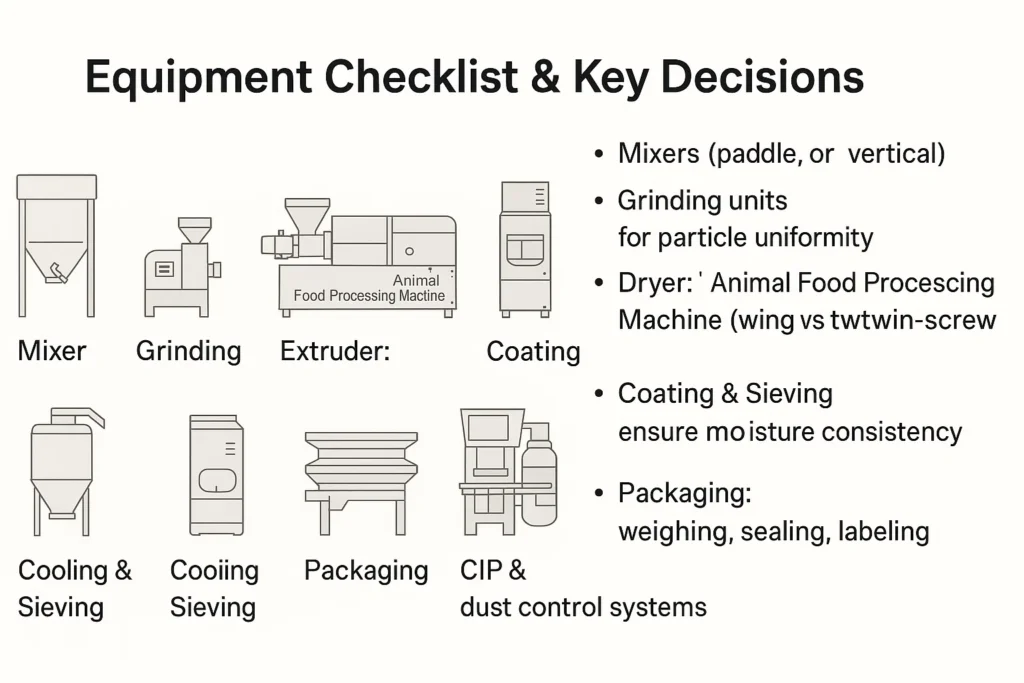
Compliance & Certification Roadmap
United States
FDA, AAFCO registration, nutritional labeling, state licenses, recall procedures.
European Union
FEDIAF standards, feed additive regulations, traceability systems.
Other Markets
Export documents, halal/organic/non-GMO certifications as add-ons.
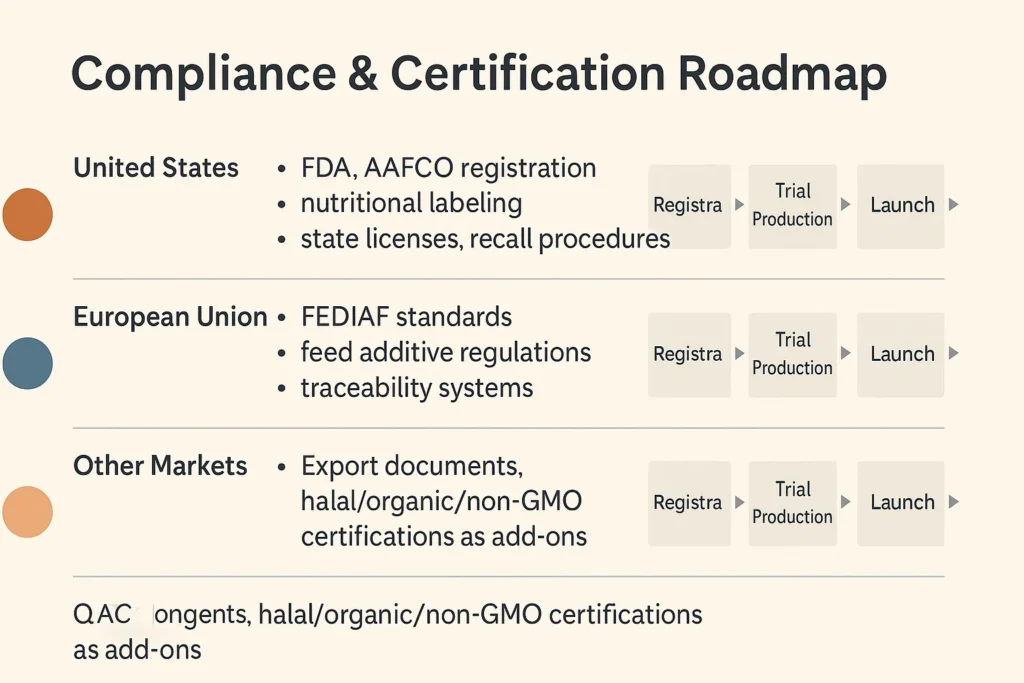
Raw Materials & Packaging Strategy
Raw materials drive cost volatility. Protein sources, grains, oils, supplements, and premixes all affect pricing. Packaging decisions (large vs small bags, barrier strength, MOQ printing) also shape investment needs.
Annual contracts or futures reduce risk
Alternative recipes for flexibility
Strategic supplier partnerships
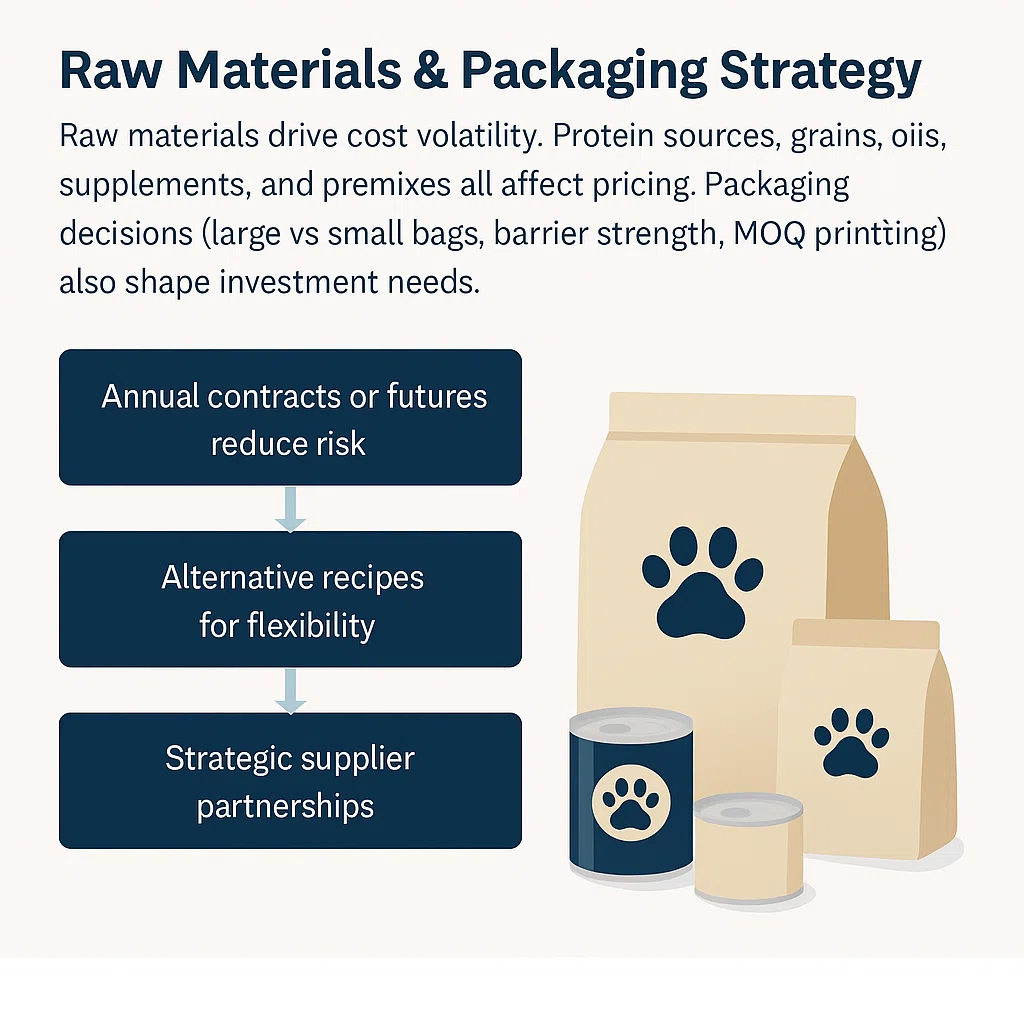
Team & Organization: The Minimum Viable Staff
Production operators
Equipment maintenance
QA/QC staff
Procurement & warehouse
EHS and compliance
Marketing & sales
Most small plants start with one shift. Moving to two shifts doubles output but adds ~40% cost overhead (due to efficiency gains).
Practical Q&A
Is $50k enough?
Only if you outsource key stages. A micro line usually needs $80k–$100k minimum.
New vs Used Equipment?
New = higher reliability, better compliance. Used = lower cost but must be carefully inspected.
Dry vs Wet vs Freeze-Dried?
Dry kibble is cheapest to start. Wet and freeze-dried need higher budgets and stricter compliance.
Hybrid Model?
Yes, combine outsourcing with a micro line to scale quickly while keeping profit margins.
How do I calculate cost per kg?
Formula: (Fixed Costs + Variable Costs) ÷ Output. Example: $20,000 ÷ 50,000 kg = $0.40/kg.
Can automation upgrades pay off fast?
Yes, adding auto-packaging or palletizing typically pays back in 6–12 months.
Best low-cost market strategies?
Direct-to-consumer, local distributors, and ODM partnerships are cost-effective entry routes.
Templates & Tools
CapEx/OpEx budget template with scenario placeholders
Production capacity conversion table (kg/h → tons/day → tons/month)
Compliance timeline sample chart
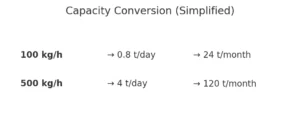
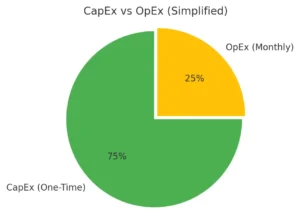
👉 Reach out to us for a free full template
Next Step: Match your budget to one of the three scenarios and request our free budget & capacity template.
At Zhuoheng Extrusion, we design customized Pet Food Processing Equipment that grows with your business.


